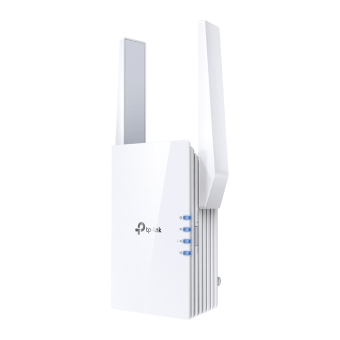What If I fail to establish EasyMesh network using TP-Link EasyMesh devices?
If you have already tried to configure the EasyMesh network using TP-Link devices but it failed, please check the following troubleshooting.
There are two scenarios in relation to the EasyMesh configuration issue, please refer to the information below to locate the problem and troubleshoot it according to the corresponding suggestions:
1) If no satellite devices can be detected or satellite device is detected but cannot be added successfully when adding EasyMesh satellite devices on main router, please refer to Case 1.
2) If the EasyMesh page on Main Router only shows wireless connection even though Ethernet cable is connected between main router and satellite devices, please refer to Case 2.
Case 1: cannot establish wireless backhaul
1) Please make sure both the Main Router and Satellite devices have already supported EasyMesh and have the latest EasyMesh-Supported firmware.
Refer to: TP-Link EasyMesh Devices
2) Please make sure the EasyMesh is enabled on Main Router and Satellite devices.
3) Make sure the satellite router has been reset or set to satellite mode.
Note: For TP-Link satellite router, after you reset it or set it to satellite router mode, please don’t log in to its Web management page again.
4) Move the satellite device close to the main router to ensure a good WiFi connection between them.
5) Please try to add the satellite device via both web interface and also via WPS to see if both of them don't work.
Refer to the following guides for adding Satellite Router/Range Extender (two methods included):
How to add a router to an EasyMesh network as a satellite device
How to add an extender to an EasyMesh network as a satellite device
6) Reset the satellite devices and repeat the EasyMesh configuration process.
Case 2: cannot establish Ethernet backhaul
1) Make sure both the Main Router and Satellite devices have already supported EasyMesh Ethernet Backhaul and have the latest Ethernet Backhaul-Supported firmware.
Refer to: EasyMesh Routers Support Building a EasyMesh Network via Ethernet Backhaul NOW
2) Refer to this guide to make sure the configuration process is correct:
How to Build an Ethernet Backhaul Using Two EasyMesh Routers
How to build an Ethernet Backhaul using TP-Link EasyMesh Range Extenders
3) Make sure the Ethernet cable between main router and satellite device is working fine, try different Ethernet cables for testing
4) Connect satellite device directly to the main router if there is a switch or something in between.
5) Try to use different Ethernet/LAN port on Main router and Satellite devices as the backhaul port.
6) Reset the satellite device and repeat the EasyMesh configuration process.
If the above troubleshooting steps cannot solve the problem for both cases, please contact the TP-Link support and provide the following information for further troubleshooting:
a. the main router and satellite device’s model, hardware and firmware version.
b. detailed topology of your whole network.
c. detailed description of the current problem, provide some screenshots if possible.
Este guia foi útil?
A sua resposta ajuda-nos a melhorar o nosso site.


